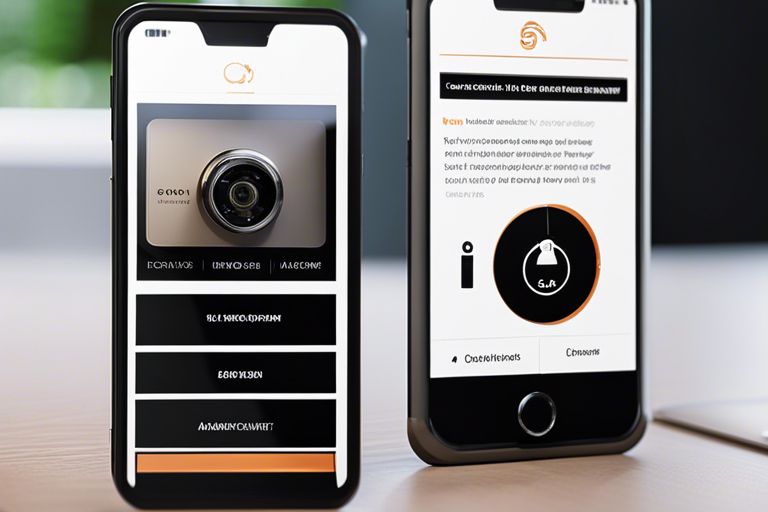Understanding the return on investment (ROI) of your small business security measures is crucial for evaluating the effectiveness of your security strategy. Calculating the ROI of security investments can not only help you justify the expenses but also identify areas for improvement. In this guide, we will research into how you can effectively measure the ROI of your small business security initiatives, allowing you to make informed decisions to protect your business from potential threats. By following these steps, you can ensure that your security investments are providing the necessary protection while maximising the value for your business.
Key Takeaways:
- Define clear security objectives: It is important to establish specific security goals for your small business to measure ROI effectively.
- Use key performance indicators (KPIs): KPIs such as number of security incidents detected and resolved can help in quantifying the effectiveness of security investments.
- Calculate cost of security incidents: Understanding the financial impact of security breaches can help in evaluating the returns on security investments.
- Consider long-term benefits: Look beyond immediate cost savings and consider the long-term benefits of investing in security measures for your small business.
- Regularly review and adjust security strategy: Continuously assess your security measures and make necessary adjustments to improve ROI and mitigate risks effectively.
Setting the Foundation for Measurement
Identifying Security Investments
When setting out to measure the ROI of small business security, the first step is to identify the various security investments being made. This includes not only monetary investments in hardware, software, and services, but also investments in staff training, security policies, and incident response planning. By having a clear understanding of all security investments, businesses can accurately assess their impact on the overall security posture.
Establishing Baselines and Metrics
Once the security investments have been identified, the next step is to establish baselines and metrics for measuring the effectiveness of these investments. Baselines serve as a starting point against which progress can be measured, while metrics provide quantifiable data points that can be used to track improvements or detect areas that require attention. By establishing clear baselines and metrics, businesses can effectively monitor and evaluate the returns on their security investments over time.
Establishing baselines and metrics for measuring small business security ROI involves defining key performance indicators (KPIs) that are relevant to the business’s security goals. These KPIs can include metrics such as number of security incidents detected, average incident response time, percentage of employees trained in security best practices, and cost savings from avoided security breaches. By consistently tracking and analysing these metrics, businesses can gain valuable insights into the effectiveness of their security measures and make informed decisions to improve their security posture.
Factors Influencing Security ROI
- Direct Costs and Savings
- Indirect Impact on Business Operations
Direct Costs and Savings
Direct costs and savings are crucial factors that influence the return on investment of small business security measures. Direct costs include expenses related to implementing and maintaining security solutions such as firewall installation, antivirus software, and employee training. On the other hand, savings can be seen in reduced potential costs of data breaches, theft, or system downtime.
Indirect Impact on Business Operations
Indirect impacts on business operations must also be considered when measuring security ROI. These can include factors such as improved employee productivity, enhanced customer trust, and compliance with data protection regulations. Investing in security measures can lead to smoother operations, reduced reputational damage in case of a breach, and overall business resilience.
How-To Calculate Security ROI
Measuring Tangible Benefits
When calculating the Return on Investment (ROI) of your small business security measures, it’s vital to first identify and quantify the tangible benefits. These benefits can include cost savings from reduced incidents, lower insurance premiums, or even increased productivity due to enhanced security measures. By analysing these measurable outcomes, you can determine the financial impact of your security investments more accurately.
Assessing Intangible Advantages
In addition to tangible benefits, it’s crucial to also consider the intangible advantages that improved security can bring to your small business. These intangible benefits may include enhanced brand reputation, increased customer trust, and a stronger competitive edge in the market. While these advantages may be harder to quantify, they play a significant role in the overall success and resilience of your business in the long run.
Intangible benefits like improved brand reputation and customer trust may not have a direct monetary value, but they contribute to long-term sustainability and growth. By acknowledging and assessing these intangible advantages, you can gain a more comprehensive understanding of the true impact of your security investments on your small business.
Tips for Maximising Security ROI
Regular Review and Adjustment
Regularly reviewing and adjusting your small business security measures is crucial for maximising your ROI. By staying up-to-date with the latest security threats and vulnerabilities, you can identify any weaknesses in your current system and make necessary adjustments to strengthen your defences. This proactive approach ensures that your security measures remain effective and provide the best possible return on your investment.
Best Practices and Proactive Strategies
Implementing best practices and proactive strategies is key to maximising your small business security ROI. By following industry standards and incorporating proactive security measures, you can reduce the risk of security breaches and minimise their impact on your business. Regularly updating software, enforcing strong password policies, and providing security awareness training to employees are just some of the best practices that can help enhance your security posture.
- Regularly review and adjust security measures to identify weaknesses and strengthen defences.
- Implement best practices such as updating software and enforcing strong password policies.
- Incorporate proactive strategies to reduce the risk of security breaches and their impact on your business.
By combining regular review and adjustment with best practices and proactive strategies, you can maximise your small business security ROI and protect your valuable assets from cyber threats.
Conclusion: How to Measure Small Business Security ROI
Measuring the return on investment (ROI) for small business security is crucial for determining the effectiveness of security measures in place. By calculating the cost of security investments against the potential losses from security breaches, businesses can assess the value of their security measures. It is crucial to consider both tangible and intangible benefits, such as reduced downtime, reputation protection, and customer trust. Regularly reviewing and adjusting security strategies based on ROI measurements will ensure that businesses stay protected against evolving security threats while maximising the value of their security investments.
FAQ
Q: Why is measuring small business security ROI important?
A: Measuring small business security ROI is crucial as it helps businesses understand the effectiveness of their security investments and shows where improvements may be needed.
Q: What are the key metrics to consider when measuring small business security ROI?
A: Key metrics to consider when measuring small business security ROI include cost of security solutions, time saved due to security measures, reduction in security incidents, and impact on overall business productivity.
Q: How can small businesses calculate the ROI of their security investments?
A: Small businesses can calculate the ROI of their security investments by comparing the costs of implementing security measures to the monetary benefits generated, such as reduced losses from security breaches and increased customer trust.
Q: What are common challenges faced when measuring small business security ROI?
A: Common challenges when measuring small business security ROI include accurately quantifying the value of intangible benefits like customer trust, difficulty in attributing cost savings directly to security measures, and lack of expertise in conducting ROI calculations.
Q: How can small businesses improve their security ROI measurement process?
A: Small businesses can improve their security ROI measurement process by setting clear objectives and metrics from the outset, regularly reviewing and updating security strategies, seeking expert guidance where necessary, and leveraging automation tools to streamline data collection and analysis.






